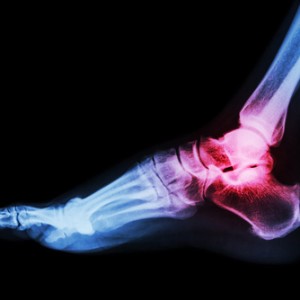Study Reveals Association Between Pulmonary Fibrosis and Rheumatoid Arthritis, Scleroderma Sine Scleroderma & ANCA Associated Vasculitis
Written by |

 A new study on Diffuse Parenchymal Lung Disease (DPLD) entitled “A case of pulmonary fibrosis associated with rheumatoid arthritis, scleroderma sine scleroderma and ANCA associated vasculitis” was published in SpringerPlus by Amritpal Singh Anand from Lakeland Rheumatology, St Joseph, USA, and colleagues.
A new study on Diffuse Parenchymal Lung Disease (DPLD) entitled “A case of pulmonary fibrosis associated with rheumatoid arthritis, scleroderma sine scleroderma and ANCA associated vasculitis” was published in SpringerPlus by Amritpal Singh Anand from Lakeland Rheumatology, St Joseph, USA, and colleagues.
Diffuse parenchymal lung disease (DPLD) is a heterogeneous group of disorders characterized by inflammation and/or fibrosis of the parenchymal interstitium of the lung. Progression of disease results in impaired oxygen transfer and scarring within the lungs. The cause of DPLD cause can be unknown or due to other diseases, such as autoimmune diseases like as rheumatoid arthritis (RA), systemic sclerosis (SSc), dermatomyosits/polymyositis and anti neutrophil cytoplasmic antibody (ANCA) associated vasculitis can result in DPLD. The prognosis of DPLD is worse in patients with overlap syndromes.
In this study, the research team investigated a rare case of a 71 year old Caucasian woman with progressive aggravation pulmonary fibrosis secondary to an overlap syndrome with rheumatoid arthritis (RA), scleroderma sine scleroderma (SSS) and anti neutrophil cytoplasmic antibody (ANCA) associated vasculitis. The research team reviewed scientific literature regarding DPLD in association with RA, systemic sclerosis (SSc) and ANCA associated vasculitis. They include prognostic factors, histology and radiographic features of the disease conditions individually.
[adrotate group=”3″]
The research team stated that immune mediated causes of PF should be assessed since they can determine the degree of prognosis outcome. Additionally, high resolution computed tomography (HRCT) may be a choice for lung biopsy, especially if surgery is not possible, as there is a close association between histopathology and high resolution computed tomography results. Notably, if these patients are positive for ANCA, they may develop ANCA associated vasculitis later in the disease course. Moreover, if these individual conditions are monitored and better controlled the patients could have better outcomes. Finally, the authors highlight that because pulmonary fibrosis in combination with other syndromes has a poor prognosis, an intense analysis should be performed even when there is clinical confirmation of a single autoimmune condition.






